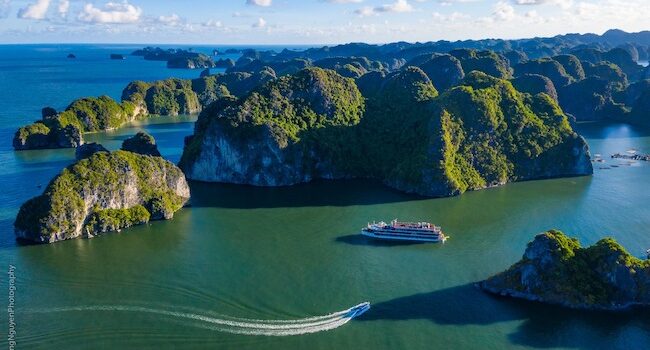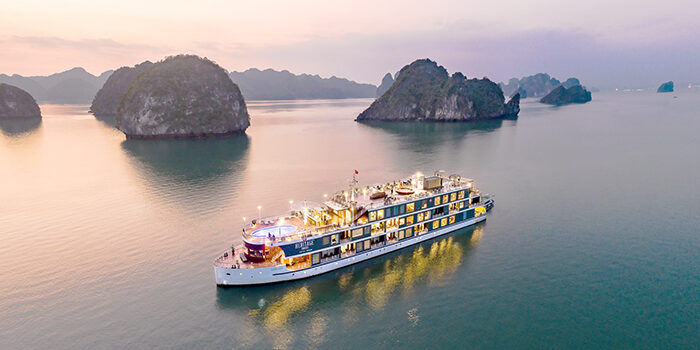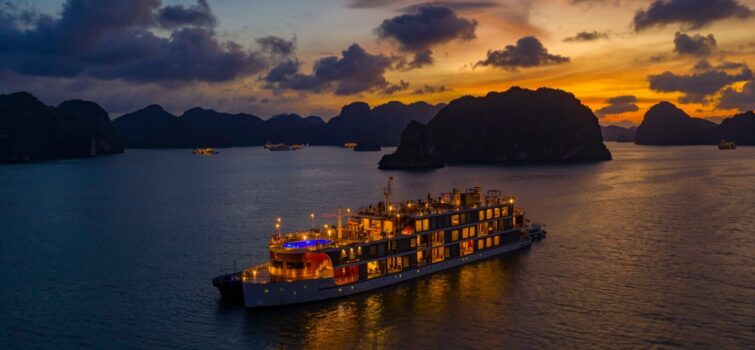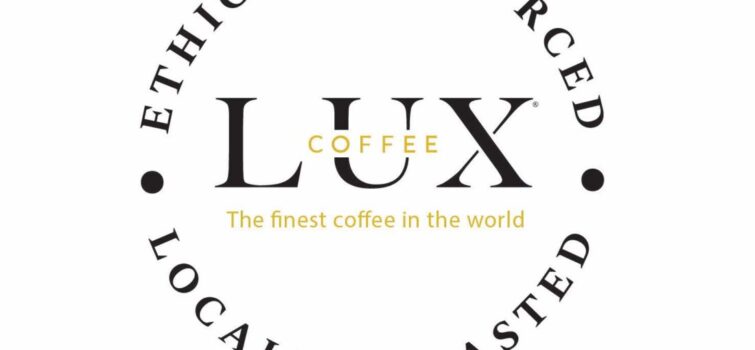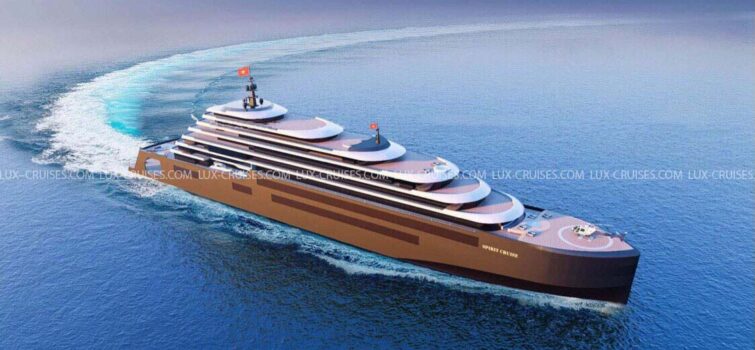Heritage Cruises Binh Chuan Ca Ba Archipelago Won TripAdvisor Travellers’s Choice Awards 2023
Heritage Bình Chuẩn, a brand of Lux Cruises Group, Vietnam’s most luxurious cruise line, has been ranked among the top cruise ships in 2023 according to TripAdvisor, the largest global travel platform. TripAdvisor awards the Travellers’ Choice based on millions of reviews and opinions from travelers worldwide, considering criteria such as service, quality, and satisfaction.
Heritage Bình Chuẩn embodies the stories of Vietnam’s cultural heritage, history, art, architecture, fashion, and culinary excellence. The cruise ship is newly built based on the Bình Chuẩn vessel, once owned by the Vietnamese ship king Bạch Thái Bưởi, who launched the first ship running from Hải Phòng to Sài Gòn.
From its departure point a century ago, Heritage Bình Chuẩn not only takes passengers on a journey to explore Lan Ha Bay with its hundreds of beautiful islands and beaches resembling a “paradise,” but also offers a space of traditional culture and the beauty of Vietnam’s natural heritage.
Moreover, stepping onto the cruise ship allows guests to travel back in time and learn about the business ventures of the “Vietnamese ship king” Bạch Thái Bưởi and the life of the “Vietnamese Picasso” Phạm Lực through his collection of 100 artworks displayed on the ship.
“We take pride in pioneering the luxury cruise travel experience and combining it with adventure in the most beautiful bays of Vietnam, such as Hạ Long Bay and Cát Bà Archipelago, for travelers to seek exploration, dreams, relaxation, and immersion in this natural heritage of the Gulf region,” said Phạm Hà, CEO of Lux Cruises Group, the company that owns Heritage Bình Chuẩn.
The prestigious TripAdvisor award gives us more confidence to expand our brand to the Saigon River, Quy Nhơn, Nha Trang, Phú Quốc, and the Cát Bà Archipelago, offering unique cruise experiences in the coming year,” added Phạm Hà.
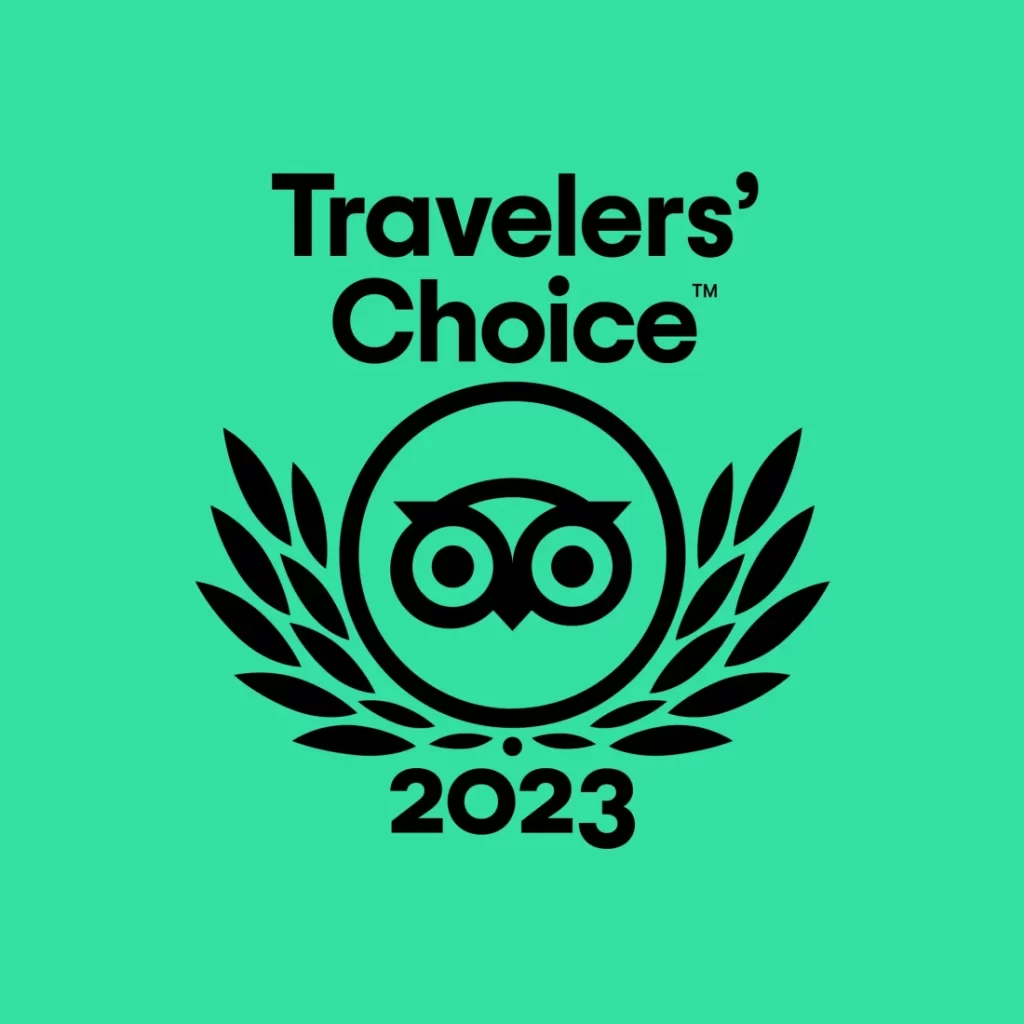
After four years of operation, Heritage Cruises has consistently received prestigious awards, including The Guide Awards, Booking.com, Vietnam National Administration of Tourism, TripAdvisor’s Certificate of Excellence 2020, TripAdvisor’s Traveler Choice 2022, and most recently, the Best Luxury Private Charter Yacht in Vietnam awarded by the Luxury Lifestyle Awards 2022 (USA).
Travel and Leisure has introduced this boutique cruise ship as a masterpiece amidst the wonders of the natural world, inviting families to visit and experience the most beautiful sea regions in Asia.
The largest website states: “Evey year, we award travelers’ favorite destinations, hotels, restaurants, and things to do around the world, based on reviews and ratings collected over the past 12 months. So our Travelers’ Choice Best of the Best winners are decided by you: real travelers from all over, sharing real opinions and stories.
The 2023 winners are a celebration of everything we did last year—all the places we discovered and all the times we just said “yes” to new adventures. We’ll reveal the winners by category throughout the year, so keep checking back for the latest”.
TripAdvisor presents the Travellers’ Choice award based on millions of reviews and opinions from travelers worldwide, covering hotels, destinations, landmarks, as well as brands and products. This annual award honors the Traveller Choice Awards 2023 across criteria such as service, quality, and customer satisfaction.
Heritage Cruises Receives Nomination for World’s Best Boutique Cruise Line 2023
[Hanoi, Vietnam – June 16, 2023] – Heritage Cruises, an extraordinary sailing experience inspired by the legendary Bach Thai Buoi, known as the king of ships, has been honored with a prestigious nomination for the highly coveted title of World’s Best Boutique Cruise Line 2023. This esteemed recognition marks a significant milestone as Heritage Cruises receives its first-ever nomination for this internationally acclaimed award.
Established in 2019, Heritage Cruises was brought to life by Pham Ha, the visionary founder and CEO of Lux Cruises, with the vision of celebrating the revered Bach Thai Buoi and reviving Vietnam’s rich cultural heritage. Pham Ha, along with the entire team and corporate culture at Lux Cruises, takes great pride in this well-deserved nomination.
Featuring 20 lavish cabins that can accommodate up to 60 passengers, Heritage Cruises boasts an exceptional staff-to-guest ratio of 1:1, ensuring personalized and attentive service throughout the voyage. The cruise line specializes in 1 to 3-night expeditions in the Gulf of Tonkin, with a particular focus on the captivating Lan Ha Bay and the enchanting Cat Ba Archipelago.
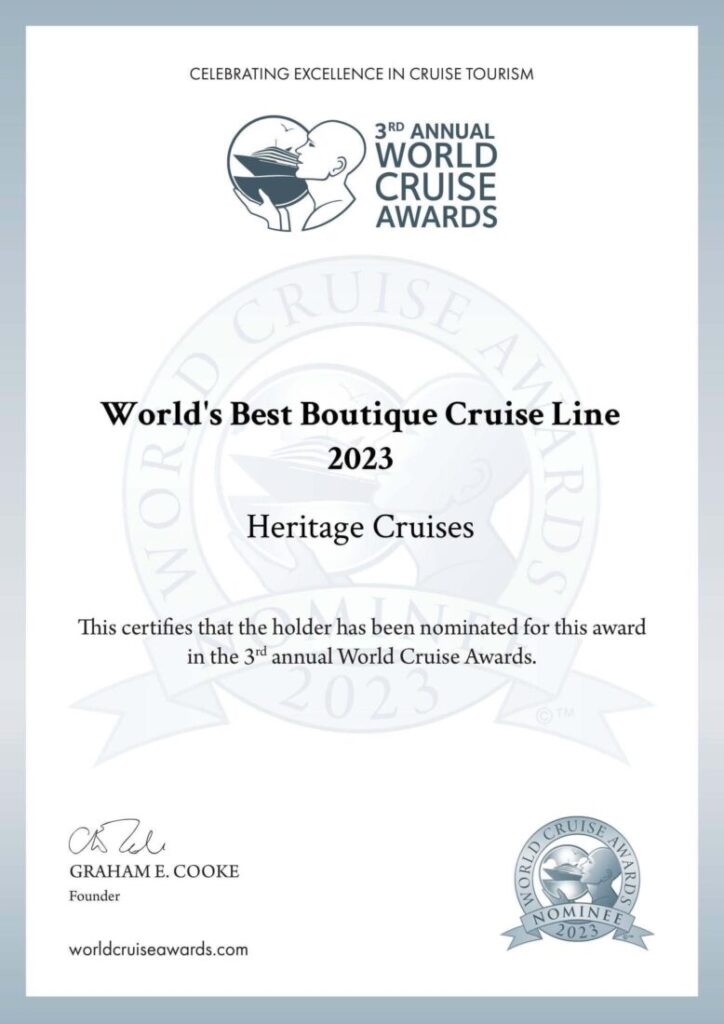
Heritage Cruises has been the recipient of numerous international and national awards, underscoring its commitment to excellence and further solidifying its reputation as a premier boutique cruise line. These accolades are a testament to the company’s unwavering dedication to delivering an extraordinary and immersive cruising experience.
The term “boutique cruise” refers to a type of cruising that offers an intimate and personalized approach compared to larger, mainstream cruise ships. Borrowed from the retail industry, where it typically describes small, stylish, and specialized shops that offer unique and curated products, the concept of boutique cruises centers around exclusivity, attention to detail, and a more intimate ambiance. These cruises often feature smaller ships with a limited number of cabins or suites, providing guests with a tailored and personalized experience. The focus is typically on delivering high-quality service, immersive itineraries, and distinctive amenities.
Boutique cruises offer a range of features, including gourmet dining experiences, luxurious accommodations, personalized service from a dedicated crew, and unique activities or excursions. They often cater to specific interests or themes, such as cultural exploration, adventure, or relaxation, aiming to establish a more intimate and immersive connection to the destinations visited.
Today’s travelers’ never-ending search for something “new and different” inspired the evolution of boutique hotels and cruises. But what exactly is a boutique cruise? While there is no strict definition of a boutique cruise, the genre does tend to have some common features. Here are top ten characteristics of boutique cruises such as Heritage Cruises: Size, Individuality, Design, Character, Culture, Service, Gastronomy, Clientele, Sense of a place, Authenticity.
With voting for the World’s Best Boutique Cruise Line 2023 set to commence from June 14 to September 15, cruise enthusiasts and travelers worldwide have the opportunity to cast their votes. The highly anticipated gala dinner and awards ceremony will take place in Dubai on October 15, 2023, where the winner will be revealed and celebrated.
To support Heritage Cruises and cast your vote, please visit https://worldcruiseawards.com/award/world-best-boutique-cruise-line/2023
Under the visionary leadership of Pham Ha, the company has realized his childhood dream of showcasing the beauty of Vietnam from the North to the South by constructing 30 ships that sail along the Vietnamese coastline. For more information about Heritage Cruises, please visit www.heritagecruises.com.
About Heritage Cruises:
Owned by Lux Cruises, Heritage Cruises is a boutique cruise line in Vietnam that offers a unique and immersive sailing experience. Established in 2019 to honor Bach Thai Buoi, the king of ships, Heritage Cruises brings Vietnam’s rich cultural heritage to life through meticulously crafted voyages. With a strong emphasis on excellence and personalized service, Heritage Cruises has received numerous international and national awards.
Lux Cruises
Step into a world of refined elegance and unmatched luxury with Lux Cruises, proudly presented by Emperor Cruises and Heritage Cruises. As you explore our remarkable fleet of cruise ships, you’ll discover a harmonious blend of timeless beauty, exceptional service, and unforgettable experiences.
At Lux Cruises, we believe that every voyage should be an extraordinary affair, where indulgence and sophistication go hand in hand. Our meticulously designed ships are a testament to this belief, showcasing exquisite craftsmanship, attention to detail, and a commitment to providing the utmost comfort and opulence for our discerning guests.
From the moment you step on board, you’ll be enveloped in an atmosphere of refined sophistication. Our highly trained and dedicated staff members are passionate about curating unforgettable moments for you, ensuring that every aspect of your journey is flawlessly executed. Whether it’s a warm smile as you embark, a personalized greeting from your butler, or the seamless coordination of your itinerary, our team is committed to surpassing your expectations at every turn.
Indulgence knows no bounds aboard Lux Cruises. Our stunning staterooms and suites are designed with your comfort in mind, featuring lavish furnishings, luxurious amenities, and breathtaking views of the surrounding ocean. Unwind in a haven of tranquility, enveloped in sumptuous fabrics and surrounded by elegant touches that elevate your experience to new heights.
Culinary excellence takes center stage on Lux Cruises. Our team of world-class chefs is dedicated to creating gastronomic masterpieces that tantalize your taste buds. From delectable international cuisine to exquisite regional specialties, each dish is crafted with the finest ingredients, showcasing the rich flavors and culinary traditions of the destinations we visit. Indulge in a symphony of flavors, complemented by impeccable service and an extensive selection of fine wines and spirits.
As you sail with Lux Cruises, you’ll have the opportunity to immerse yourself in captivating destinations and captivating experiences. From secluded beach excursions to immersive cultural encounters, our expertly curated itineraries showcase the best of each region, allowing you to connect with the local heritage, natural beauty, and vibrant communities that make each destination unique.
Lux Cruises is more than just a cruise; it’s a gateway to unforgettable memories and transformative experiences. Whether you seek a romantic getaway, a family adventure, or a celebration of life’s special moments, our sales team is here to assist you in creating a personalized journey that exceeds your expectations.
Escape the ordinary and embrace the extraordinary with Lux Cruises. Elevate your travel experience to new heights and embark on a voyage of indulgence, where impeccable service, exquisite accommodations, and awe-inspiring destinations seamlessly blend into an unforgettable journey. It’s time to set sail and create memories that will last a lifetime. Contact our sales team today to embark on your extraordinary adventure with Lux Cruises. Discover more at lux-cruises.com
SPANNING HISTORY
Revered by the people of Hanoi, Long Bien Bridge is living historical evidence of the courage of the capital throughout the ups and downs of the 20th century.
Construction began in 1899 and when completed, in 1902, the bridge was named after Paul Doumer, the French Governor General of Indochina. At that time it was the fourth-longest bridge in the world and the only steel bridge spanning the Red River. In 1954, it was renamed Long Bien Bridge.
At 1,648 metres in length, including 19 spans, its main purpose was a strategically vital one as a direct rail link between Hanoi and the port of Hai Phong.
For many people, Long Bien Bridge is a reminder of French technological innovation at that time. However, it would be an oversight not to mention the more than 3,000 Vietnamese workers who undertook the challenge of building the bridge, using cement from Hai Phong, lime from Hue, and thousands of cubic metres of wood from Thanh Hoa, Phu Tho and Yen Bai provinces.
The bridge has been a major witness of national history and has stood firm throughout two wars against the French and Americans. During the French War (1946-1954), the French used the Hanoi – Hai Phong railway line to evacuate their civilians and troops. It was across the Doumer Bridge that the final contingent of French soldiers walked on the afternoon of 9 October, 1954, after withdrawing from Hanoi Citadel. Vietnamese soldiers then took possession of the bridge, officially renaming it Long Bien Bridge. On the morning of 10 October, 1954, troops entered the city and declared it liberated.
SPANNING HISTORY
Later on, during the American War (1955-1975), the bridge became a key target of US bombers. In March 1965, as the Americans unleashed their sustained aerial bombardment known as ‘Rolling Thunder’, anti-aircraft guns were installed on the central bridge towers. From May to October 1972, President Nixon’s ‘Operation Linebacker’ inflicted further damage on the bridge by hitting it on four occasions, demolishing three more spans and once more severing the vital rail link between the capital and the coast. Altogether, seven spans and four support columns were destroyed during the American War.
After the Paris Peace Accords, work began to rebuild the bridge using steel supplied by the USSR, and by March 1973 trains were once again running from the centre of Hanoi to the Gia Lam junction. But this reconstruction left only half of the bridge with its original shape.
Brighter future
Long Bien Bridge is now over 100 years old and remains an important part of daily life for residents of the capital. The bridge is one of five now crossing the Red River and the only one where traffic moves on the left-hand side. Young teenagers, expats and tourists alike love to walk across it on the weekend, buying boiled glutinous corn or charcoal-grilled sweet potatoes from vendors. The bridge is also the best place in town to watch the sunrise or sunset. Many brides and grooms as well as hip young local people choose Long Bien Bridge as the backdrop for their photos. In the afternoon, people in Ngoc Thuy village and Ngoc Thuy ward pick up fresh vegetables or fish for dinner from the small open-air afternoon market on the bridge.
SPANNING HISTORY
Despite the repairs, however, the bridge is seriously degraded. There have been several proposals put forward recently to modify and modernise the bridge, so that the city can tackle the increasing amount of traffic between the districts of Hoan Kiem and Long Bien.
The first plan was to build a new bridge on the site of the Long Bien Bridge, keeping the central part in place and retaining the railway track but moving other sections of the bridge elsewhere for preservation.
The second option was to construct a new bridge with a similar design and preserve the old one.
The third proposal was to upgrade the bridge while keeping its central part and framework.
The biggest challenge for Hanoian authorities is identifying the best solution to deal with the architecturally-important bridge, a treasured heritage site with cultural and historical significance.
So far, every proposal to change the image of Long Bien Bridge has had its share of supporters and detractors, but one plan has truly sparked controversy. A project to transform the bridge into a cultural and arts space was put forward by Vietnamese-French architect, Nguyen Nga, in a recent interview on RFI (Radio France Internationale).
‘Instead of reminding us of wartime, which resulted in so many losses, the bridge could be a symbol of hope and culture, beautifying Hanoi, the city of peace,’ she said.
Under her plans, the damaged spans of the bridge would be repaired and the whole bridge then converted into a giant Contemporary Arts Museum.
‘A large space would be built on the bridge’s structure to exhibit old steam locomotives and antique carriages would become cafés and restaurants and the bridge covered with transparent glass panels,’ she explained. ‘This would will give the bridge a new appearance while maintaining its structural integrity.’
The central rail track would become a new space dedicated to creative and cultural activities and trees and streetlights would be incorporated to create a romantic walking path.
The highlight of the project would be redesigning the Middle Bank (Bai Giua), an island under the bridge, turning it into an Art Park with gardens and orchards, cycling paths, a skating rink and a climbing wall. One idea is to also have a mulberry plantation and to build a silk weaving village.
Nga has also suggested building a Lotus Tower Contemporary Arts Museum on the right bank of the Red River, where 2.5 ha of land is currently used for light industry.
The tower would be in the shape of a flowering lotus, the national flower of Vietnam, and made from metal and wood. It would house contemporary works of art, as well as new technology from Vietnam and other countries.
Besides housing short-term and permanent exhibitions, the museum would also be a cultural space, with a library, a concert hall, cafés and restaurants and, on the top (ninth) floor, an open space with panoramic views over Hanoi.
‘The project would help improve the living environment of Hanoi residents, gradually changing the urban space around the capital’s green walking routes and adding more green spaces to Hanoi,’ Nga emphasised.
While there is currently no agreement on the future of the project, it is still a positive and bold idea for the development of Hanoi and the country.
Lux Cruises Group applies new price policy for new season
Lux-Cruises is a combination of 6 cruises, tenders, speedboats under two brands, Emperor Cruises and Heritage Cruises operating in the most scenic bays and archipelagos of Vietnam.
HANOI, VIETNAM – Lux Cruises (a member of Lux Group in Hanoi, Vietnam) applys a new price policy for the low tourist season from 1st June to 30th Sept 2023. This is one of the annual low season promotions aimed at stimulating tourist demand and increasing revenue for the company.
Lux-Cruises is a member of Lux Group, an award-winning Asian travel and hospitality group with more than 20 years delivering authentic and unique experiences.
Lux-Cruises is a combination of 6 cruises, tenders, speedboats under two brands, Emperor Cruises and Heritage Cruises operating in the most scenic bays and archipelagos of Vietnam: Halong Bay, Bai Tu Long Bay, Lan Ha Bay (Cat Ba Archipelago), Nha Trang Bay and Phu Quoc Archipelago.
Lux-Cruises started its operations in 2019 and faced a challenging time in tourism due to the Covid-19 pandemic. However, Lux-Cruises has quickly recovered by the quality services and its attractive pricing policies that offered to both domestic and foreign customers.
According to Mr. Ha Pham, the CEO of Lux Group “Lux-Cruises will still offer special discounts during this period: the 10kth customer of the year, Hung King’s Festival, Vietnam Independence Day… as a way to show deeply graceful to all valued customers”.
Lux-Cruises always puts customer and partner satisfaction as the guideline of its activities. With the desire to provide customers with experiences that bring back memories of Vietnam’s heritage and culture. Heritage Cruises draws inspiration from the legacy of the national business man Bach Thai Buoi, who revolutionized water transport on the North Vietnamese rivers. Emperor Cruise, on the other hand, is designed in the royal style of King Bao Dai in the early of 20th century.
Mr Ha Pham emphasizes: “Lux Cruise strives to revive the cultural heritage of Vietnam and introduce it to international visitors. Each detail of the ship’s design is meticulously crafted to perfection, large cabin from 33m2 to 70m2 rooms, all of which have private balconies. While other boats may have 30-40 cabins with the same size but Emperor Cruise has only 10 cabins and Heritage Cruises has only 20, providing customers with ample space to relax and immerse themselves in the memories of the ship.”
Finally, Lux Cruises aims to continuously innovate and improve its products, as well as its team and service mentality to provide customers with the highest quality services.
Source: Traveldailynews
Cruise along Ha Long Bay listed among 15 travel ideas to explore Vietnam’s hidden gems including Heritage Bình Chuẩn
Australia’s Lonely Planet Magazine has recommended 15 top travel experiences to discover the culture, cuisine and the hidden gems of Vietnam.
Ha Long Bay
It is said that cruise tour is the best way to explore the world heritage site Ha Long Bay, which is dotted with karst limestone mountains rising out of emerald waters.
For those who want a luxurious overnight stay to watch the sun come up on Ha Long Bay, Heritage Cruises, Indochine Cruise, Paradise Cruise and Stellar of the Seas are worth considering.
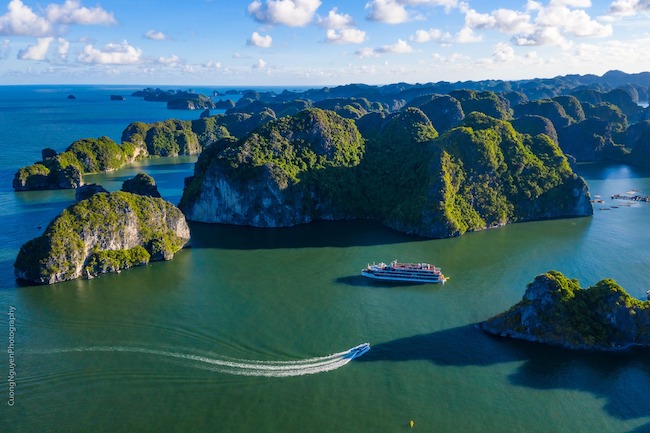 All five-star cruise ships in Ha Long are equipped with luxury cabins and modern amenities like bars, swimming pools, a golf club, a gym and spas.
All five-star cruise ships in Ha Long are equipped with luxury cabins and modern amenities like bars, swimming pools, a golf club, a gym and spas.
They also offer outdoor adventures like kayaking, cave exploring, onboard cooking classes, squid fishing at night and excursions to floating villages.
If Ha Long is crowded, its sister Bai Tu Long Bay is an alternative choice where there are still few tourists.
Other experiences include tasting Hue’s imperial cuisine, watching rare monkeys on Son Tra Peninsula, exploring a UNESCO-protected Hindu temple complex, visiting the Cao Dai Temple, jumping on a motorbike, conquering Ban Gioc Waterfall, breathing the fresh air in Da Lat, visiting Dak Lak’s coffee plantations, discovering Vietnam’s Maldives in Phu Yen…
Get to Know the Ins and Outs of Vietnamese Coffee Culture
In Vietnam, coffee is enjoyed at all times of the day, from the first glass at breakfast, to meetings, dates or social gatherings with friends and family. Coffee has a special place in Vietnamese culture, and this simple drink forms the epicenter of daily life. Recently, I had the opportunity to participate in a coffee demonstration when cruising aboard a luxury boat with Emperor Cruises, on the pristine Bai Tu Long Bay. The presentation allowed me to really understand the origins of coffee in Vietnam, the steps involved in making the perfect cup coffee, and the various regional differences in how people enjoy their coffee from North to South.
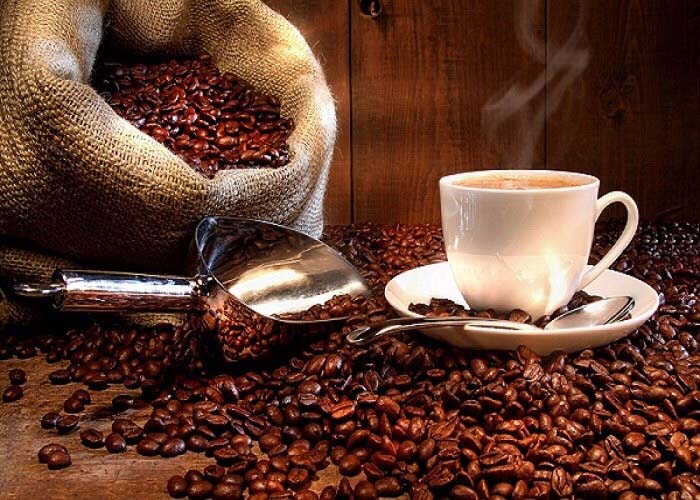 The Origin of Coffee in Vietnam
The Origin of Coffee in Vietnam
Cà phê, café or coffee, depending on which language you speak, originated in the West, and the French have been importing it into Vietnam since colonial times. Back then, coffee was a drink reserved only for the nobility, French officials or intellectuals. Gradually, coffee has become a favorite drink in the lives of all Vietnamese people. In the 1870’s, the first coffee trees were planted at churches in Ha Nam, Quang Binh, Kon Tum Province by monks. In 1888, the first coffee plantation was established in Ke So, Tonkin by the French residing the riverside area. As it became more popular, other plantations were created in highland areas such as Phu Quy, Nghe An, Dak Lak and Lam Dong. Today, Vietnam is the world’s second largest producer of coffee beans and has developed its own distinct coffee culture. Across the country, cultivation focuses on three main types of coffee: Arabica, Robusta, and Excelsa (also known as Liberian coffee).
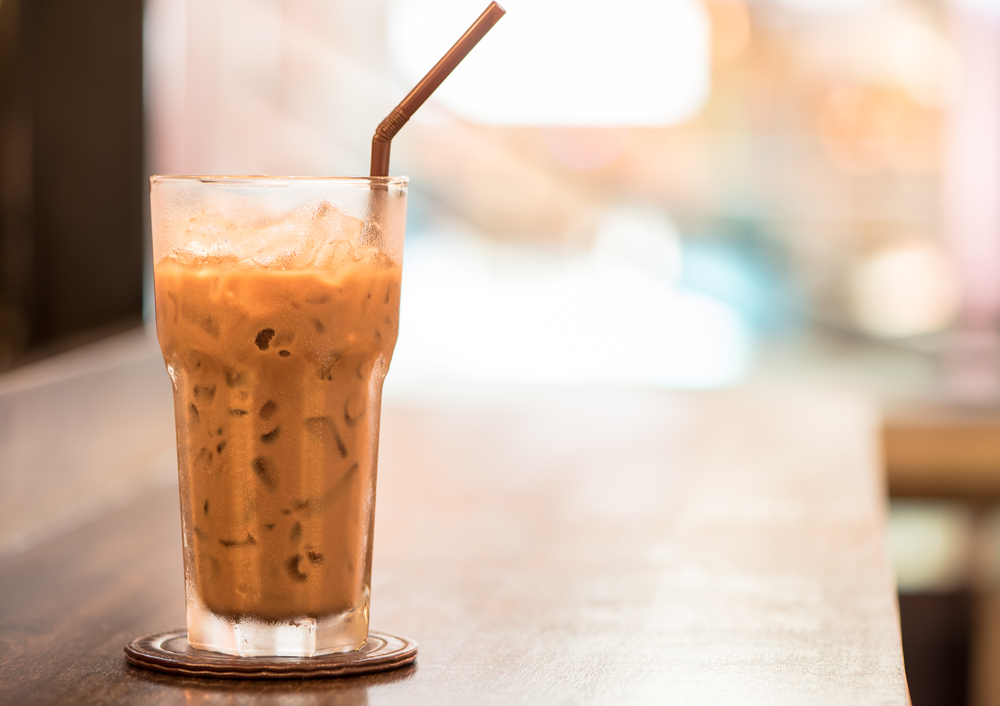
Drinking Style
The sophistication of coffee is reflected in the drinking style of Vietnamese people, who each have their own unique way in which to enjoy it. They don’t consider it a quick caffeine fix to wake you up in the morning like in America. Instead, they sip a cup of coffee and think about life in the same way you might indulge in a good glass of Scotch. The beans are mixed in different ways to create various flavors. The three main coffee styles in Vietnam are filtered, iced, or with condensed with egg or coconut to enhance the taste.
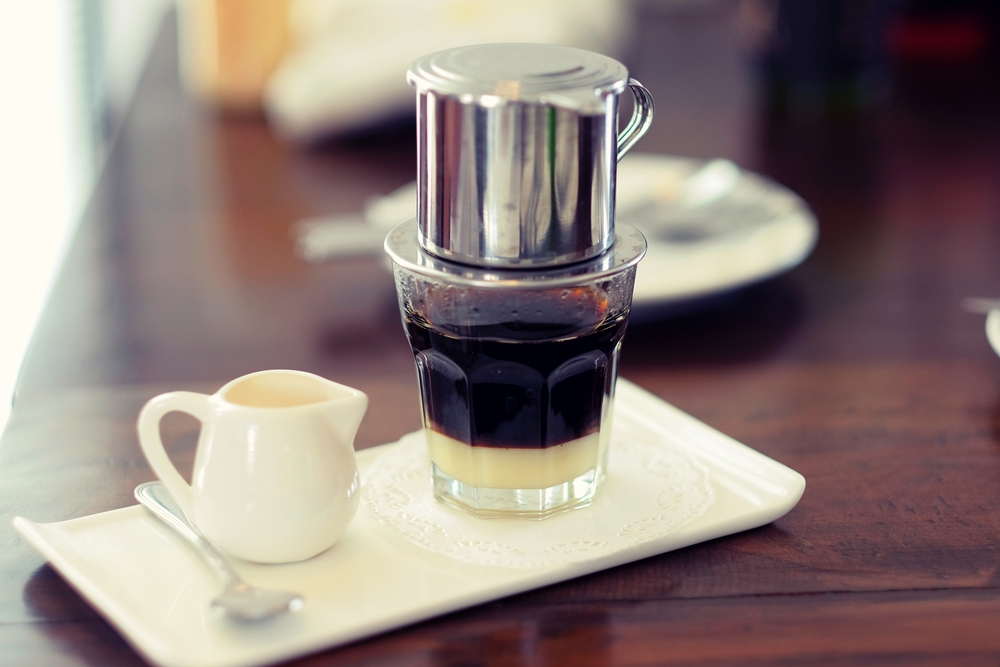
Filtered Coffee
Coffee in Vietnam is often brewed in small metal filters known as a “phin” (which comes from the French word, “filtre”). The Vietnamese filter is akin to a tiny coffee pot that looks like a hat sitting atop the cup or glass. Inside is a chamber for the ground coffee beans, which are placed inside, and hot water is added and allowed to percolate through the small holes. The process can take up to fifteen minutes to complete, and this harks back to the Vietnamese ritual of taking one’s time over coffee.
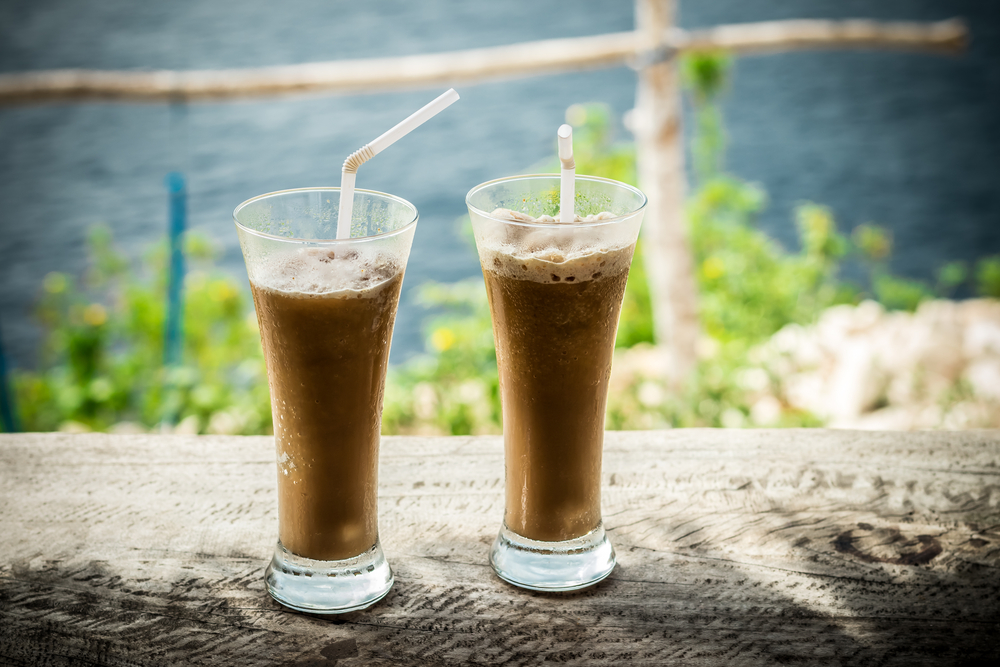
Iced Milk Coffee
Iced milk coffee (Cà phê sữa đá) consists of filtered coffee with condensed milk, which adds a sweet taste to the typically bitter coffee. Iced milk coffee and iced black coffee are the two most popular types you will find in coffee shops or at home. Vietnamese iced milk coffee was voted one of the 15 best coffees in the world by the renowned American travel magazine, Condé Nast Traveler, and is also considered one of the top 10 most unique and delicious coffees of the world by Bloomberg.

Egg Coffee
While adding an egg to your coffee appears very strange to foreign visitors, egg coffee is a favorite of the residents of the country’s capital, Hanoi. Egg coffee is made up of coffee, eggs, and milk—three simple ingredients that when mixed, create a unique flavor. This coffee must be enjoyed as soon as it has been mixed and is still hot. In Hanoi, egg coffee is famous as a culinary specialty, first appearing in the early 20th century. The most famous coffee shop is Giang Café.
Differences in Coffee Culture
Different regions in Vietnam have their own distinct way of preparing and enjoying a coffee. For example, Southerners often wrap ground coffee in a thin fabric bag and cook it in an earthenware kettle, preferring to drink iced coffee. Northerners usually choose filtered coffee and black or brown coffee beans that have a very strong flavor. All coffee shops have their own unique character and styles, and many have been operating from generation to generation.

Saigon
For the Saigonese, iced coffee is a popular drink for all ages. When you say “Coffee?,” it is an excuse to invite friends for good conversation. The cups of coffee become the link between two or more people. You will see men who are drinking coffee with the daily newspaper, sitting on low plastic stools on the sidewalk, while the coffee shops are full every morning. “Cafe bệt” is a humorous term used in Saigon, where everyone sits freely on the ground to drink coffee. Notre-Dame Cathedral Basilica is the ideal place for this type of coffee. Here, black coffee and milk coffee are not brewed using filters, and they are often served in plastic cups with straws so you can drink on the move.

Hanoi
One of Hanoi’s oldest cafés, Cafe Lam Hano is a one-room establishment that is practically a historical monument. Its proprietor, Nguyen Lam, provided coffee, and often loans, to the city’s impoverished artistic community during the war. Rumor has it that he is sitting on an art collection now worth a fortune. He serves Vietnamese-style hot and iced coffee to a crowd of faithful regulars. Many of the great names in Vietnamese painting have passed through here: Nguyen Sang, Nguyen Tu Nghiem, Van Cao and Bui Xuan Phai, a veritable collection of masters in Vietnamese art culture.
Cafés in Hanoi are commonly named after the owner, and many streets are devoted to coffee shops, such as Hoe Nhai, Phan Dinh Phung, Nguyen Huu Huan and Trieu Viet Vuong. In Hanoi, coffee is the most favorite drink of artists, the elderly and businesspeople. They consider drinking coffee as an art that hides a long story.
Hanoians have a much greater variety of names for their coffee compared to the Saigonese. One regional specialty is brown coffee (cap phe nau). It is served with condensed milk without ice, and is considered far more bitter than the Saigon version. Because of its small size and dense population, Hanoian coffee shops are simpler than in Saigon, and locals prefer to drink in small cafes in the Old Town or on the sidewalk.
A In-Depth Look at Vietnamese Tea Culture
Tea drinking has been a tradition of the Vietnamese people for over 3,000 years and, like many places throughout the world, is an integral part of Vietnamese culture. Present everywhere from daily life to holidays and weddings, tea brings friends and family together in conversation and celebration. As a Vietnamese person, I newly discovered our drinking culture and its sophistication while recently cruising aboard a luxury boat. I loved the tea demonstration and the introduction of tea aboard Emperor Cruises on the pristine Bai Tu Long Bay. The demonstration allowed me to really understand the art of drinking tea, from the countryside folk and montagnards, to normal people and royalty.
Che or Tra, is still confused even by Vietnamese people in daily language, and although many foreigners believe all teas in Vietnam are simple green teas, this is not really the case. There are many types of tea in Vietnam, each with its own unique flavor and properties, and there are many aspects of tea culture worth noting. The therapeutic and medicinal functions of tea are well known. In humid weather, hot tea is devoured for its surprising cooling effect, and in cold weather for its warmth.
Tea cultivation, its historical influence in Vietnam, its relationship to the environment, its economic impact on the ethnic minorities who grow it, combined with the aesthetic aspects and social importance of tea-drinking rituals, could all provide topics for extensive research.
Like many locals, I often drink ‘Tra Nong’ (Hot Tea) or ‘Tra Da’ (Iced Tea) when I have a few moments to myself. My parents in the countryside of the Red River Delta drink green tea at home and in their fields daily, as their parents, grandparents and ancestors have done since the old times. There are many original varieties of tea enjoyed in Vietnam such as green tea, black tea, perfumed tea, or tea with flowers. The countless methods in which to prepare and enjoy them are very interesting to discover.
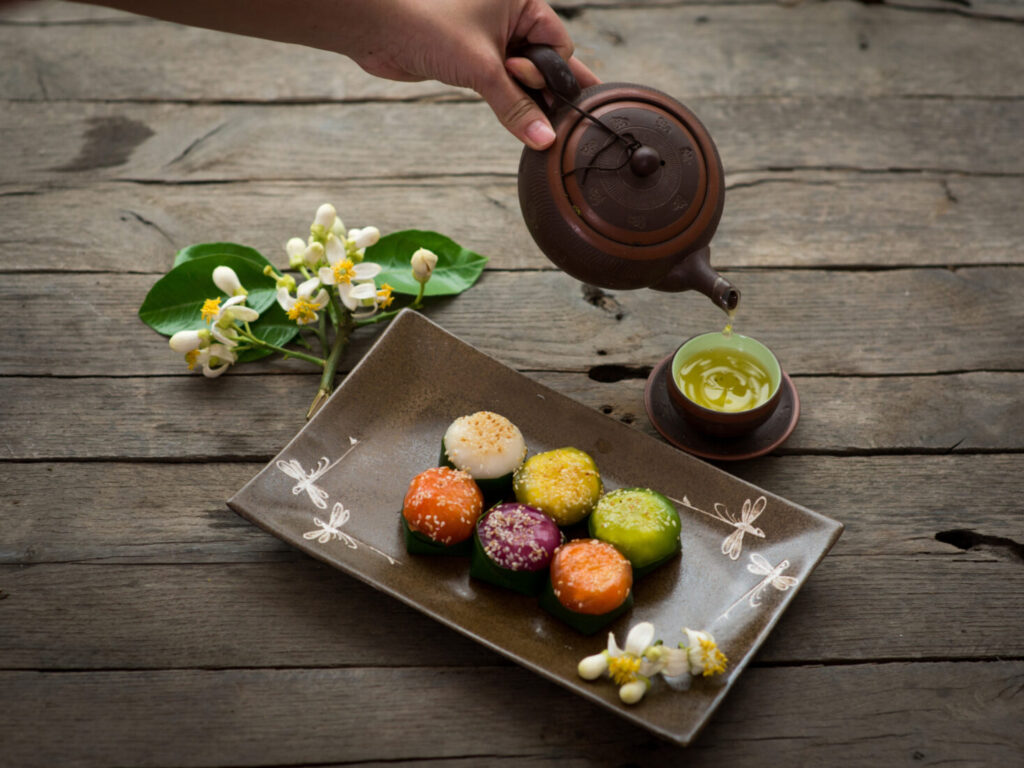
Vietnam is among the top tea producers in the world, and the people have a habit of drinking tea every morning, after lunch and on special occasions. A cup of tea is always a good excuse to start a relaxed conversation or serious discussion, and is also very important to show hospitality to guests that visit your house. They often drink “tra man”, fresh tea buds with some dried leaves that are steeped in water.
In the countryside, locals collect the green leaves of the plants, toast them and boil them. They keep it warm in a ceramic tea pot Bat Trang used by the whole family, and every household will have the same teapot for many years. Sometimes, they bring it to the fields and drink tea on their lunchbreak.
In the mountainous areas, the montagnards drink so called ‘Shan Tuyet Tea’, which has a special processing technique. The fresh tea buds are as big as banian buds and coated with lanugo. After being processed, they are covered with a milky layer of “snow,” (shiny aromatic herbs) and the gas that is released is then inhaled. When drinking it, the tongue will feel a slightly bittersweet taste that is followed by a persistent sweetness in the throat.
If travelers go to Suoi Giang in the tea harvesting and processing season, they will smell a characteristic flavor of this tea region. Due to the special climate here, locals do not have to use any kind of pesticides because pests are not an issue. In the winter, there is little sunlight, and fog covers the entire region. The tea buds are also covered by fog and you will feel a biting cold on your fingers when picking them.
The tea trees here are over 300 years old. Their trunks and buds are very impressive, which makes them different from other types of tea. Shan Tuyet tea varieties have all three main characteristics: aroma, a strong taste and blue water. The tea, from harvest until processing, is produced manually by the Mong ethnic people here.
Although without much of the ceremony associated with Japanese tea culture, Vietnamese tea culture is not without its own sophistication. The art of drinking tea is based on the tea preparation, the invitation to the guests, and the act of enjoying the brew.
The tea connoisseur says, “Nhất thủy, nhì trà, tam bôi, tứ bình, ngũ quần anh” which translates as, “Of most importance is the water souce, the second is the tea variety, the third is how to prepare tea correctly, fourth comes the tea pot, and fifth is loved ones enjoying it together”.
Drinkers can imbibe it solo (nhat am), in pairs (doi tam) or in groups (quan am). Depending on the particular situation, there are various sized teapots used for different occasions.
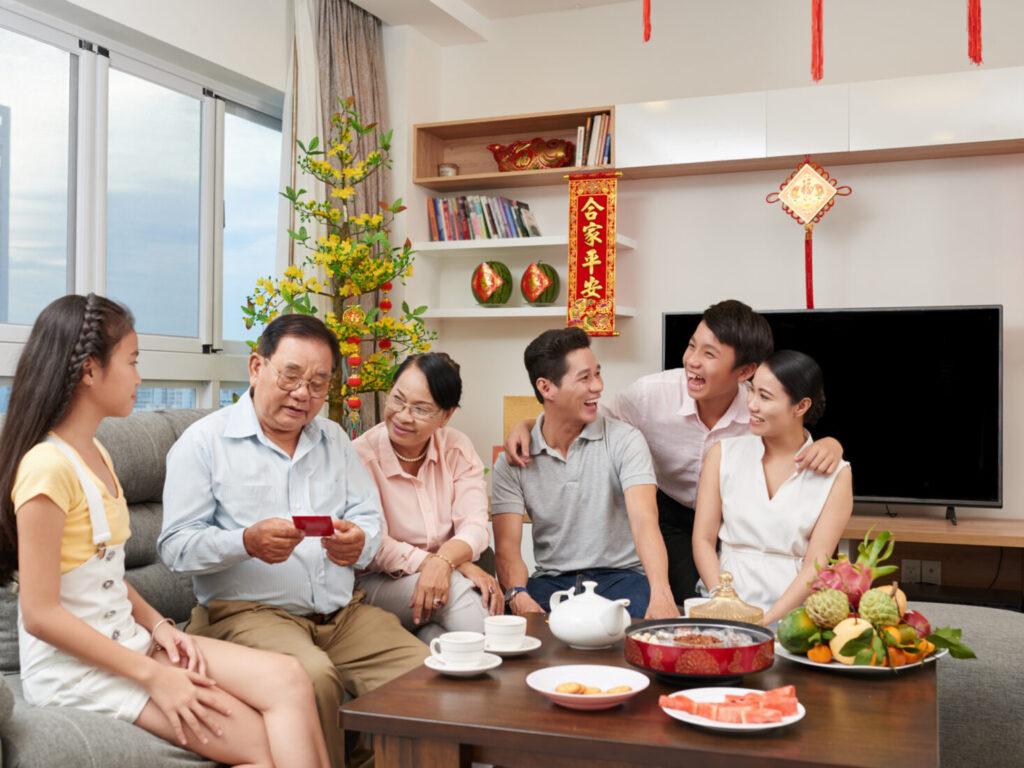
Drinking Style
Vietnamese tea drinking is simpler than the Chinese or Japanese customs, but it bears the essence of Vietnamese culture. The yellow and green of the tea and the natural scent of flowers symbolise the country, rich in culture and natural resources. Bitterness in the first taste reflects the hard-working life of the people, while the sweet and cool aftertaste that lingers evokes the Vietnamese soul – sentimental and faithful.
A tea course requires a brazier, a boiling pot, an earthenware pot of cold water (usually rainwater, and on special occasions, some dew gathered from lotus leaves). To serve, one uses a teapot, teacups, a tea box, and a few pieces of aloe or aromatic wood.
The host will boil the water for a few minutes, then take it off the fire and let the temperature drop to about 80-90 degrees Celcius. It is poured gently into the teapot, and then covered tightly for about five minutes. While the tea is brewing, tea connoisseurs will comment on the fine aroma of the tea, always keeping it as the focus of the conversation, as you would do when wine tasting. From the teapot, the tea is poured into a large cup called a soldier-cup.
This procedure ensures an even distribution of the tea’s flavour and color. If it were poured directly into each cup, the first cup would be more diluted than the last. As you sip the tea, discuss its taste and the mood it brings you.
“A tea server slowly pours tea into cups from a teapot. The pouring is performed gracefully, in a manner known as ‘high mountain-long river’, which helps the scent of the tea spread evenly. Offering it to guests, the host holds the cup with three fingers, offering the tea in that symbolizes ‘three dragons flanking a pearl’.
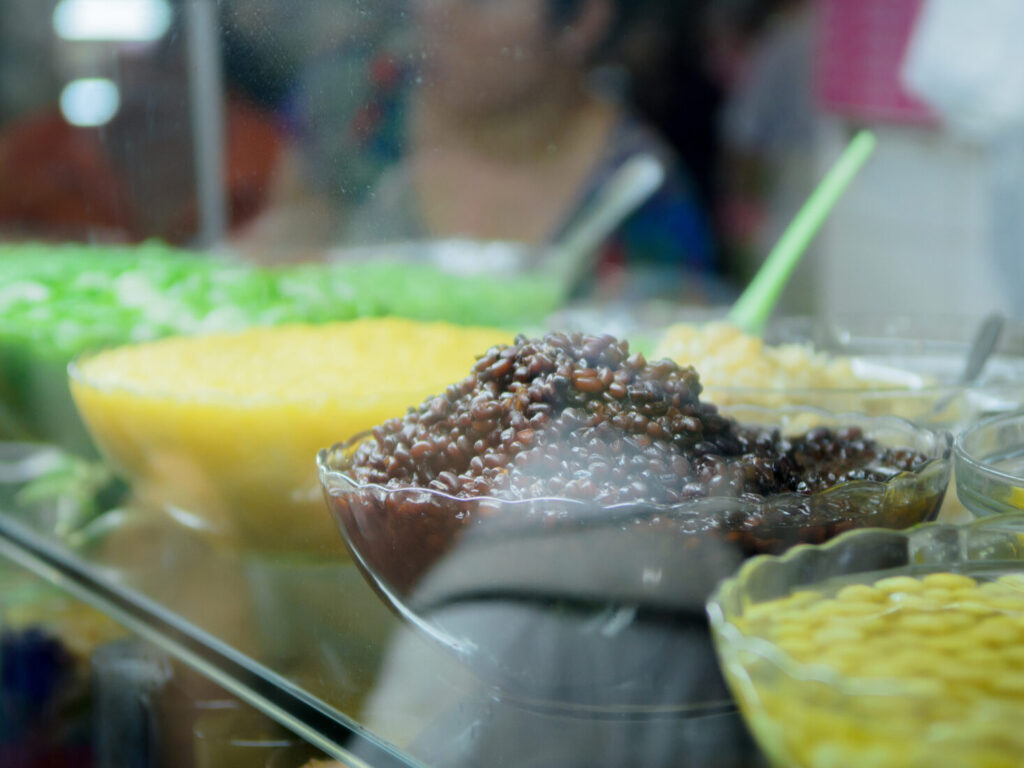
That’s only a snapshot of the tea drinking culture of the Vietnamese people. “Enjoying a cup of tea and thinking about life helps people to be good and avoid evil,” Quang says.Four words – Hòa, Kính, Thanh and Tịch – are used to describe the intangible aspects of tea drinking. Hoa means peace, Kinh implies respect for the elderly and friends, Thanh means tranquility, and Tich signifies leisure.
Quang says serving tea correctly is an elaborate ritual. For starters, you have to choose your teapot and cups with care, and they must match the tea.”The cup also changes according to the season. In winter, it should have a bottom and rim of equal size, so it doesn’t lose its heat, and the drinker can hold it inside his palm. But in summer, tea should be served in a cup with a larger rim, so it can cool quickly,” he notes.
All the pots and cups are cleaned in boiling water, which gets rid of the dirt and warms them up. Dried tea leaves are put inside the pot, which is then filled with boiling water and covered. More hot water is poured over the pot, so that it is heated both inside and out, and the leaves are thoroughly brewed.It can be said, that Vietnamese tea is a sophisticated art which takes lots of time to master.
However, it can of course be enjoyed in a very simple manner.” Tea types can be divided into three kinds with different properties, including dried tea leaves, tea combined with herbal remedies and tea scented with flowers.
Lotus-Scented Tea for the King
Besides unscented green tea, teas with the scent of flowers are unique examples of Vietnamese tea culture. The whole process is completed by hand, in a very careful manner, to transmit the natural scents into the tea. There are many varieties of tea enjoyed in Vietnam with flowers. Among them is jasmine tea (tra nhai or lai) or lotus tea (tra sen).

Lotus is Vietnamese national flower and grows across the country. Hue lotus tea is Hue’s speciality. Enjoying this lotus tea is a traditional ceremonial art of the Imperial City of Hue. During the Nguyen Dynasty, imperial maids used to row to Tinh Tam Lake to collect dewdrops from the sen leaves to make tea. The maids served it to kings in special teapots, one for each of the four seasons.
“Lotus tea has its own summer teapot, for example,” says Quang – our tea expert on board Emperor Cruises Halong. “Sen flowers grow in all of the country’s rural areas. But a sen tea connoisseur prefers tea scented by flowers that grow in Tinh Tam Lake, where the lotus flowers are much more aromatic than from elsewhere”, he explains.
Lotus flowers bloom from early May through June. This is the season when dried tea leaves are traditionally placed in newly opened lotus flowers, and then tied to perfume the tea.”When the lotus flowers opened at midnight, the tea leaves were placed inside the flowers. At 5am, these same flowers were then harvested to make tea,” adds Quang.
Lotus flowers for fragrant tea should be picked before dawn. Cool air and fog help to preserve the light, pure fragrance of sen, because, after sunrise, sen loses its fragrance due to the heat.In the past, lotus tea was only served to kings in Hue, Minh Mang and Tu Duc. Emperor Bao Dai is among some of the famous rulers of the past who loved to enjoy tea daily.
Nowadays, everyone can enjoy lotus tea aboard Emperor Cruises Halong, and the surrounding villages and areas are famous producers. For example, Quang Ba, Tay Ho and Nghi Tam Villages have long been renowned for making high quality lotus-scented tea.
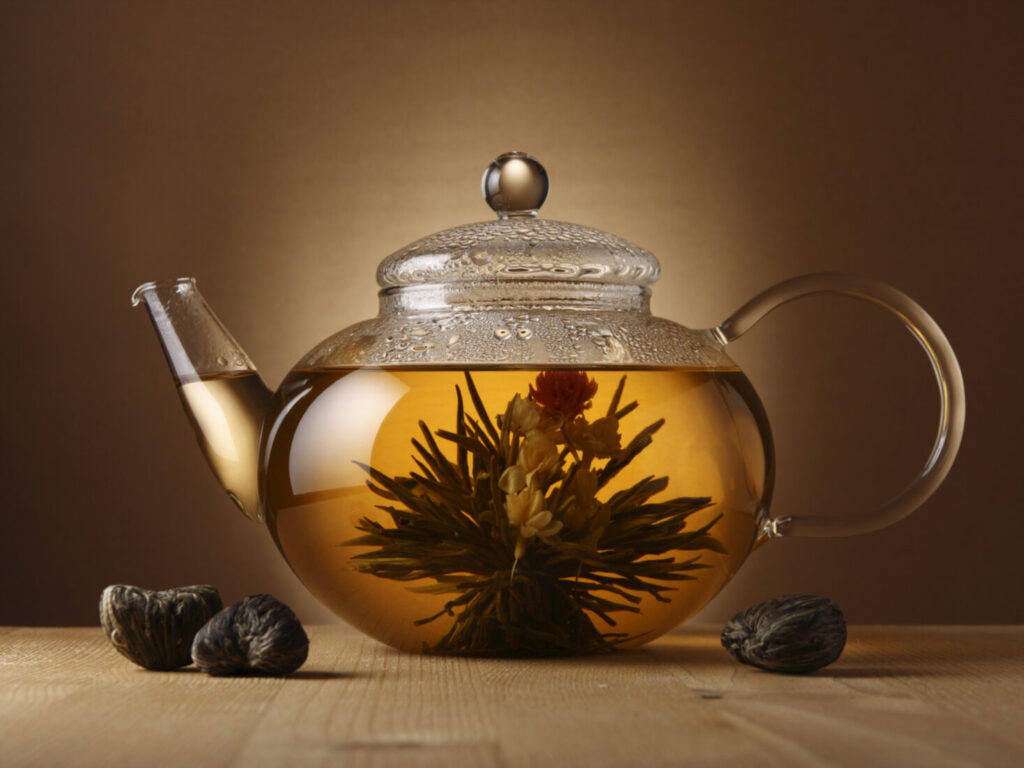
“As a result, many Hanoians have known for generations how to enjoy lotus tea in the most sophisticated, precise and stylish way”, added Tuan Nguyen says. West Lake lotus tea is considered the most precious lotus tea because of its beauty and aroma.
There are also many closely guarded secrets for making tasty lotus-scented tea.“One method involves layering dry tea and dry lotus anthers, then wrapping them in water-resistant paper for three days to preserve the delicate fragrance. This process must be repeated seven times for three weeks to make the most perfect sen tea”, says Mr. Trung, a tea maker in the West Lake, who learned the art from his father.
20th Century writer Nguyen Tuan, praised lotus tea for embodying the highest cultural values of the Trang An (an old name for Hanoian natives). “It reflects the precision, style, elegance and connoisseurship of Hanoian culture, and Sen Tea is the most precious and popular perfumed tea”, he remarked.
The sen fragrance embodies the most essential qualities of earth and heaven. “Lotus plants grow in black mud, but never smell bad. Therefore, the lotus represents the most important qualities of sky and earth. This is why the lotus roots, leaves and flowers are precious herbs,” said Vietnam’s most renowned herbalist, Hai Thuong Lan Ong (1720-1791).
The tea connoisseur and renowned painter, Mr. Pham Luc, enjoys lotus tea for its aromatic fragrance, compared to other teas. “Tra sen is a national heritage which should be preserved,” Luc says.
Pham Ha
Hàng không và Du lịch – đôi cánh để thu hút khách quốc tế đến Việt Nam
Hàng không và Du lịch – đôi cánh để thu hút khách quốc tế đến Việt Nam
Du khách bay tới Việt Nam cần trở nên dễ dàng hơn và giá cả hợp lý hơn. Khách du lịch đến cần được “vui vẻ”, được “chiều chuộng”, tận hưởng nhiều sản phẩm du lịch đa dạng và sáng tạo, đầy cảm xúc, từng điểm chạm đều mang lại sự hài lòng và tạo nên lượng khách chất lượng hơn.
Tuy nhiên, vấn đề đặt ra là tại sao ngành du lịch Việt Nam lại khó cạnh tranh so với các nước trong khu vực. Một trong các nguyên nhân đó là giá vé rất cao, do đó cần thiết lập mặt bằng giá mới. Ngoài ra, du lịch Việt Nam cần tập trung vào khách hàng và phát triển các sản phẩm trải nghiệm mới và sáng tạo, phù hợp với bản sắc dân tộc và đáp ứng nhu cầu của khách hàng.
Việc đổi mới và sáng tạo là rất cần thiết để đáp ứng sở thích của khách quốc tế và Việt Nam. Cần có chiến lược phát triển du lịch, thương hiệu, hướng tới chất lượng hơn số lượng. Đặc biệt, cần quản lý điểm đến tốt để phát triển bền vững.
Giá vé máy bay cao, ít lựa chọn cản trở khách du lịch đến Việt Nam
Đầu năm 2023, Lux Travel DMC – một thành viên của Lux Group đã có một đoàn khách Ý 30 người đăng ký tham quan Việt Nam trong 16 ngày. Tuy nhiên, giá vé máy bay quá cao và không có đường bay thẳng từ Ý đã khiến khách hàng quyết định không đi. Một đoàn khách khác từ nước Anh cũng đã phải từ bỏ kế hoạch du lịch Việt Nam vì giá vé máy bay quá cao, thay vào đó, họ đã chọn Thái Lan do đường bay thuận tiện và giá vé tốt hơn. Tôi đã đi công tác tại hội chợ WTM London và ITB Berlin và nhận thấy giá vé cao đã cao gấp đôi so với thời điểm trước năm 2019.
Để phát triển ngành du lịch Việt Nam, việc phát triển hệ thống hàng không là rất quan trọng. Việc hợp tác giữa các đối tác trong ngành du lịch như hàng không, lữ hành, khách sạn và các cơ quan quản lý điểm đến sẽ thúc đẩy phục hồi và phát triển ngành du lịch. Việc định vị Việt Nam là một điểm đến du lịch bền vững, kinh doanh du lịch phải được tử tế và cung cấp trải nghiệm độc đáo là cần thiết.
Việt Nam có bốn điểm mạnh về tài nguyên du lịch khác biệt độc đáo so với các nước trong khu vực là văn hoá, thiên nhiên, con người và ẩm thực. Tuy nhiên, cơ chế chính sách, chất lượng nguồn nhân lực, sản phẩm du lịch, xúc tiến, quản lý điểm đến và ứng dụng chuyển đổi số là những điểm yếu của Việt Nam hiện nay.
Để thu hút khách du lịch quốc tế đến Việt Nam, cần cấp thiết tháo gỡ các điểm nghẽn và xúc tiến hiệu quả. Định vị Việt Nam là một điểm đến di sản văn hoá và thiên nhiên là cần thiết. Trong đó, di sản là khác biệt và bản sắc của Việt Nam. Việc định vị và cung cấp trải nghiệm độc đáo sẽ giúp du khách đến Việt Nam có trải nghiệm tốt hơn và muốn quay lại nhiều lần.
Thu hút khách du lịch cao cấp bằng sản phẩm và dịch vụ chất lượng
Lux Group đã từng tung chiến dịch WOW Vietnam dựa trên những thế mạnh của đất nước mình để thu hút khách cao cấp tới Việt Nam. Chiến dịch này đưa ra bảy lý do VIETNAM mời gọi du khách tới thăm gồm: V – Varied landscape (Phong cảnh đẹp), I – Indigenous culture (Văn hoá bản địa đặc sắc), E – Exotic beaches (Bãi biển đẹp), T – Timeless charm (Vẻ quyến rũ vô tận), N – Natural heritage sites (Các di sản thiên nhiên), A – Ancient cities (Các đô thị cổ), M – Memories to cherish forever (Trải nghiệm đáng nhớ).
Dưới góc độ nhà đầu tư kinh doanh du lịch, du thuyền, nhà hàng và khách sạn, tôi cho rằng Việt Nam cần phát huy 9 chữ S để trở thành cường quốc du lịch:
- System (hệ thống): Hệ thống chính sách, bao gồm Bộ Du Lịch, đã gỡ bỏ các rào cản và thúc đẩy phát triển kinh tế du lịch, đóng góp hơn 10% vào GDP. Thị thực điện tử Việt Nam (E-visa) đã được áp dụng cho tất cả khách du lịch muốn đến thăm Việt Nam, miễn visa ít nhất 45 ngày và được phép nhập cảnh và xuất cảnh nhiều lần đối với các nước đã mở rộng miễn visa đối với các thị trường nguồn và tiềm năng như Mỹ, Canada, Úc, New Zealand, Đông Âu, Ấn Độ. Khách du lịch có thể lấy visa ngay tại cửa khẩu quốc tế (visa on arrival) một cách dễ dàng và thuận tiện. Điều đặc biệt là tạo điều kiện cho những người nghỉ hưu từ 50 tuổi trở lên có thể dễ dàng đến Việt Nam để tiêu tiền, mua nhà ngôi nhà thứ hai (second home) nghỉ dưỡng, chăm sóc sức khoẻ và sống tại đây.
- Sun, Sand, Sea, Sail (Biển xanh, cát trắng, nắng vàng và du thuyền): Việt Nam có rất nhiều tiềm năng cho du lịch biển với bờ biển dài hơn 3000km và hơn 4000 hòn đảo. Có tới 28 tỉnh thành có biển và 125 bãi biển đẹp được công nhận trên thế giới, như Nha Trang, Lăng Cô, Lan Hạ và kỳ quan vịnh Hạ Long. Tuy nhiên, để phát triển du lịch biển đảo, chính sách cho kinh tế du lịch cần được thay đổi để tạo điều kiện thuận lợi hơn cho tour biển đảo và tour trải nghiệm trên vịnh. Việc đơn giản hóa thủ tục hành chính và quy chuẩn theo tiêu chuẩn quốc tế là cần thiết. Hạ tầng cảng biển và tài nguyên du lịch ven biển cũng cần được quy hoạch và khai thác hợp lý hơn. Tập đoàn Lux Cruises Group (Emperor Cruises và Heritage Cruises) đã và đang khai thác trên nhiều vịnh đẹp của Việt Nam và đang phát triển đội tàu, nhưng vẫn còn nhiều rào cản về cảng biển và quy định hàng hải.
- Scenery (Cảnh quan): Tận hưởng khoảnh khắc đẹp tự nhiên bền vững, điểm đến không ô nhiễm, cung cấp trải nghiệm đáng nhớ, giúp du khách tận hưởng những cảm xúc phong phú và mang về những kỷ niệm đáng nhớ.
- Smile (Nụ cười): Nụ cười toả nắng của tất cả người Việt Nam, từ cánh cửa hải quan đến những người lái xe xích lô, các nhân viên trong ngành du lịch cần có thái độ, kỹ năng và hiểu biết để đem đến sự hài lòng cho khách du lịch.
Ngoài ra, #SMILE (Cười). SMILE: S – Bền vững (Sustainability) với chiến lược phát triển xanh, thân thiện môi trường; M – Nguồn nhân lực (Manpower) với mục tiêu nâng cao kỹ năng của lực lượng lao động du lịch lên tiêu chuẩn quốc tế; I – Kinh tế bao trùm (Inclusive Economy) bảo đảm các hoạt động du lịch và vì du lịch, tính tới du lịch; L – Bản địa hóa (Localisation) trong đó đưa nét độc đáo của mỗi cộng đồng làm điểm thu hút du lịch; E – Hệ sinh thái (Ecosystem) tận dụng hệ sinh thái du lịch và kết hợp du lịch và nông nghiệp.
- Service (Dịch vụ): Thái độ + trình độ phục vụ + quy trình hiệu quả. Thái độ chiều khách của nhân viên du lịch rất quan trọng để gây ấn tượng đẹp với khách hàng và giúp họ quay lại nhiều lần. Điều này làm cho kinh tế du lịch tử tế, từ tâm và hiếu khách. Ngoài ra, quy trình phục vụ hiệu quả cũng rất quan trọng để đảm bảo chất lượng dịch vụ được cung cấp tốt nhất cho khách hàng.
- Shopping (Mua sắm): Việt Nam cần phát triển nhiều trung tâm mua sắm chuyên dụng cho hàng hóa cao cấp, các thương hiệu có hoàn thuế. Nên sản xuất các sản phẩm bản địa cao cấp, thủ công mỹ nghệ, thời trang, nông sản cà phê, trà xuất khẩu tại chỗ để thu hút khách hàng. Khách hàng muốn mua sắm những sản phẩm cao cấp nhưng vẫn tiếp tục mua sắm mà không bị cạn túi tiền.
- Sex (Tình dục): Khu vực đèn đỏ có giấy phép và được quản lý chặt chẽ, đảm bảo bảo vệ quyền lợi của người lao động. Đây cần trở thành một nghề hợp pháp, không bị cấm đối với khách hàng có nhu cầu sử dụng, dù nhiều đại biểu Quốc hội đã đề xuất hạn chế.
- Social Innovations (Cải tiến xã hội): Luôn đổi mới sáng tạo, số hoá vị nhân sinh và trải nghiệm khách du lịch, phục vụ thống kê, hoạch định chuẩn chiến lược, chấm dứt ước lượng, ước chừng, khoảng….
Khai mở và nâng tầm di sản Việt là điểm nhấn về du lịch trải nghiệm di sản văn hoá và thiên nhiên, đặc trưng và khác biệt nhất của Việt Nam. Điều này sẽ tạo ra giá trị mới, trải nghiệm đầy cảm xúc, bản sắc và tự hào dân tộc, thu hút du khách cao cấp trong và ngoài nước. Du lịch là để khám phá, học hỏi, tôn vinh, vui chơi và tận hưởng!
Mỗi điểm đến đều mang những bí mật, câu chuyện, kho báu về ẩm thực, thiên nhiên, văn hóa, nghệ thuật, di sản, lịch sử và con người của địa phương. Đó chính là điểm lôi cuốn du khách đến để khám phá, tận hưởng, thư giãn, hòa mình vào di sản văn hoá và thiên nhiên.
Khi đến Việt Nam, du khách không ngừng tìm kiếm những trải nghiệm mới lạ và độc đáo, khám phá văn hóa địa phương và hòa cùng người dân để tận hưởng vẻ đẹp của đất nước và con người nơi đây. Chính văn hóa Việt Nam sẽ làm nên sự khác biệt trong hành trình du lịch trải nghiệm của mỗi du khách.
Di sản là sự khác biệt độc đáo có bản sắc của du lịch Việt Nam.
Cultural Tourism – Du Lịch Văn Hoá theo định nghĩa trên Wikipedia, là một hoạt động du lịch để du khách học hỏi, khám phá, trải nghiệm và tận hưởng những giá trị văn hóa hữu hình và vô hình của điểm đến du lịch.
Sự lôi cuốn và sự hấp dẫn của sản phẩm du lịch của điểm đến là những hiện vật, sản phẩm trí tuệ, tinh thần và giá trị cảm xúc của một cộng đồng xã hội, bao gồm nghệ thuật, kiến trúc, lịch sử, di sản văn hóa, ẩm thực, văn chương, âm nhạc, sáng tạo công nghiệp và hành vi lối sống, hệ giá trị niềm tin và truyền thống văn hoá.
Du lịch di sản là một phần của du lịch văn hóa. Theo định nghĩa của Tổ chức Bảo tồn Di sản Lịch sử Quốc gia Hoa Kỳ, “Du lịch di sản văn hóa là du lịch để trải nghiệm điểm đến, hiện vật, các hoạt động thể hiện chân thực những câu chuyện và con người xưa và nay, nó bao gồm văn hóa, lịch sử và tài nguyên thiên nhiên”.
Di sản thiên nhiên – đường thủy, cảnh quan, rừng cây, đầm lầy, vùng cao, động vật hoang dã bản địa, côn trùng, thực vật, cây cối, chim và động vật. Di sản văn hoá hữu hình – các di tích lịch sử, tòa nhà, tượng đài, đèn biển, hiện vật trong viện bảo tàng và kho lưu trữ…
Di sản phi vật thể – phong tục tập quán, thể thao, âm nhạc, khiêu vũ, văn hóa dân gian, câu chuyện, hàng thủ công mỹ nghệ, kỹ năng và kiến thức bản địa.
Hiện cả nước có khoảng 40.000 di tích được kiểm kê. Trong đó, hiện có khoảng 10.000 di tích được xếp hạng cấp tỉnh, thành phố; trên 3.460 di tích cấp quốc gia; 107 di tích quốc gia đặc biệt, 164 bảo vật quốc gia.
Có 8 di sản được UNESCO công nhận là Di sản Văn hóa và Thiên nhiên thế giới và 14 di sản được UNESCO công nhận Di sản Văn hóa phi vật thể của nhân loại. Trong Chương trình Ký ức thế giới của UNESCO, Việt Nam có 7 Di sản tư liệu được UNESCO ghi danh. Ngoài ra, Việt Nam còn có 9 khu dự trữ sinh quyển thế giới.
Việt Nam cần định vị điểm đến là di sản hàng đầu Châu Á
Người Việt Nam sẽ trân quý giá trị di sản và khám phá 53 tỉnh thành đi hết đất nước khám phá. Du khách nước ngoài tìm tòi, mộng mơ, khám phá, thư giãn, trải nghiệm, tôn vinh con người Việt Nam, hoà mình vào văn hoá và thiên nhiên. Những di sản văn hoá và thiên nhiên cần phát huy giá trị di sản, nâng tầm, sáng tạo những trải nghiệm mới. Không những nâng cấp làm đẹp điểm đến để du khách đến thăm và nơi đáng sống cho người dân bản địa. Không ăn mày di sản mà sáng tạo di sản tạo nhiều trải nghiệm du lịch giầu cảm xúc và đáng nhớ cho lữ khách.
Tôi kiến nghị riêng cho Khánh Hoà, di sản biển đảo nghỉ dưỡng biển làm thương hiệu du lịch THIÊN ĐƯỜNG BIỂN ĐẢO hơn cả Phú Kẹt (Thái Lan) hay Bali (Indonesia), muốn vậy phải giữ sạch môi trường, biển đẹp, hài hoà kiến trúc và cảnh quan, ngừng tàn phá huỷ hoại di sản vật thể, bảo tồn và phát huy di sản biệt thự Bảo Đại, không xây dựng trên đảo hòn Một và bảo tồn san hô và hệ sinh thái dưới nước xung quanh hòn Mun.
Việt Nam cần xây dựng hệ thống cảng biển du lịch cho tàu quốc tế đến, sao cho các tàu siêu lớn (mega ship) vào cảng được không phải tăng bo như hiện nay và các tàu mang cờ Việt Nam chạy vùng cận duyên, nối Đà Nẵng – Nha Trang, Sài Gòn – Nha Trang bằng thuỷ lộ, kết nối nội thuỷ các vịnh Vân Phong với Nha Trang bằng đường thuỷ một cách dễ dàng, hút khách ở lâu hơn, đa trải nghiệm, chi tiêu tiền nhiều hơn.
Khẩn trương đưa kinh tế ban đêm vào hoạt động với nhiều trải nghiệm, khách có cái tiêu tiền hầu bao du khách mở nhiều hơn từ 6h tối tới 6h sáng, du thuyền chạy ban đêm không giới hạn giờ phải về bến. Cho phép ngủ đêm trên vịnh Nha Trang và Vân Phong bà cả 2 vịnh một hải trình, đa dạng hoá sản phẩm trải nghiệm và không tập trung vào một nguồn khách. Cần rút ra bài học về quản lý điểm đến, có ý kiến vai trò hiệp hội du lịch và các DMO tại Nha Trang hoạt động rất tốt. Mở ra những thị trường mới, Úc là thị trường mới cho DL Khánh Hoà nếu có bay thẳng, các nước nói Tiếng Nga ngoài Ucraine và Nga. Hàng không mở lối trước kết nối nhà nước, nhà hàng, nhà xe, nhà cung cấp, nhà tàu du lịch khi phát triển thị trường mới, fam trip, pres trip và bán ngay được sản phẩm và đảm bảo được sản phẩm bán chuỗi liên kết vốn là điểm yếu của DL Việt Nam!.
Hiện nay khách du lịch có xu hướng tìm điểm đến mới cho thị trường mới, mùa du lịch mới ngoài mùa cao điểm để du lịch quanh năm, khách quen tìm sản phẩm mới, du lịch theo chủ đề mà Nha Trang Khánh Hoà nhiều lợi thế như Golf, Mice, wellness chăm sóc sức khoẻ toàn diện, du lịch thể thao, mạo hiểm, phim trường, cruise và yacht du thuyền, du lịch sang trọng luxury hút khách cao cấp.
Vĩ thanh
Việt Nam cần thực hiện cạnh tranh bằng chiến lược kết nối hàng không tốt, gỡ các rào cản, đưa ra nhiều trải nghiệm du lịch đa dạng cho du khách về thân, tâm và trí tuệ, đảm bảo có nguồn lao động có chất lượng cao và được đào tạo tốt, có thái độ, kỹ năng và hiểu biết tốt về ngành du lịch. Để làm mới ngành du lịch, Việt Nam cần có chiến lược thương hiệu quốc gia, thay đổi logo và bộ nhận diện mới, xác định điểm mạnh của ngành du lịch và đưa ra chính sách visa đột phá, có tư duy mới về kinh tế du lịch, kết nối hàng không và lữ hành có chính sách phục hồi ngắn, trung và dài hạn.
Để đạt được mục tiêu đón 8 triệu khách mới vào năm 2023 và biến Việt Nam thành quốc gia du lịch hàng đầu Châu Á vào năm 2030, cần thành lập một ban chuyên trách chịu trách nhiệm và được chỉ đạo trực tiếp bởi Thủ tướng để gỡ bỏ những khó khăn trong ngành du lịch, khách sạn và hàng không, đưa ra quyết sách nhanh chóng để phát triển ngành kinh tế này. Đồng thời, cần có ban điều hành và chịu trách nhiệm mới để thay đổi cục diện và đạt được mục tiêu nói trên.
Phạm Hà
Chủ tịch kiêm CEO
Lux Group
Email: ceo@luxgroup.vn
0912303096
Vietnam’s Lux Cruises Group targets Australia and New Zealand
Lux Cruises Group’s Founder and CEO Pham Ha and Vice Director Cao Quang Hung will join HCM City Tourism Department to showcases its expertises, authentic and unique heritage cruising in Australia and New Zealand from 10 May to 18 May 2023.
Privately-owned Lux Cruises (www.lux-cruises.com) including Emperor Cruises and Heritage Cruises, founded in Hanoi by Pham Ha in March 2014 originally in Nha Trang Bay, Halong, Bai Tu Long, Lan Ha Bay and soon Phu Quoc Island City.

Six boutique vessels, tenders, speedboats,
It operates 6 luxury boutique vessels in the best rivers, bays, islands, beaches, archipelagos of Vietnam.
A new 20 cabin ship, Heritage Binh Chuan, has been launched in September 2019 for three-night voyages in the archipelago of Cat Ba and Lan Ha Bay, offshore Hai Phong for the first time.
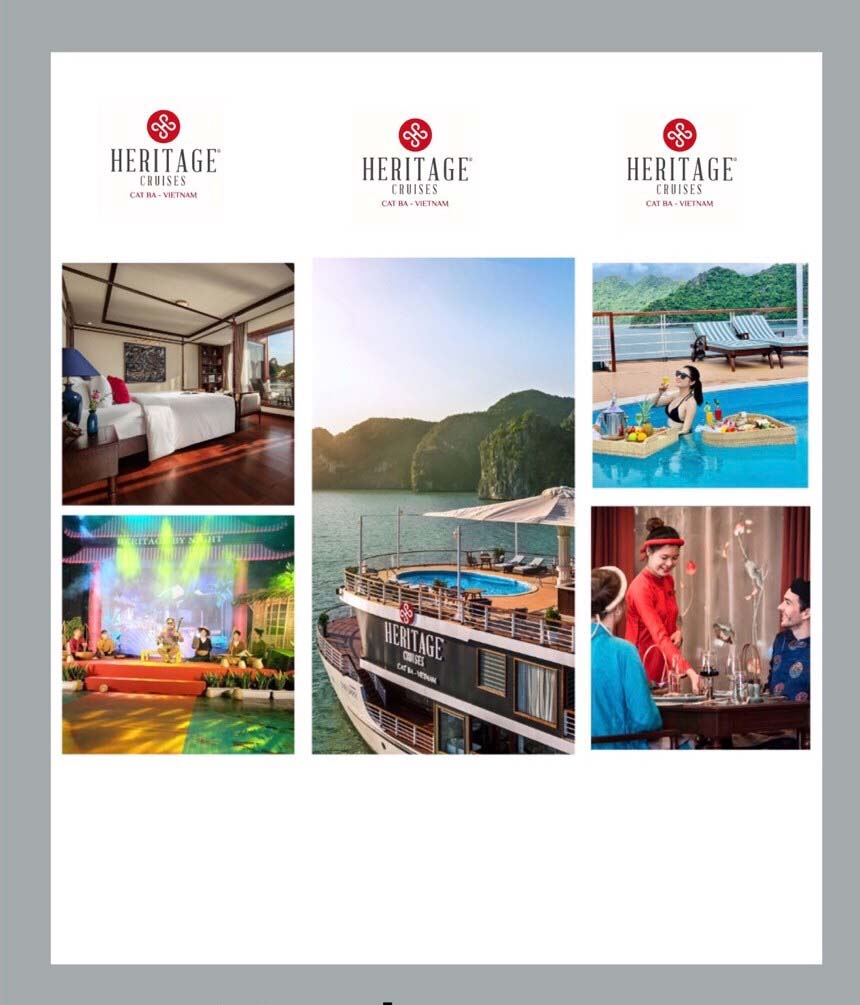 Embark on a journey back in time to Vietnam in 1930s with Heritage Cruises Binh Chuan Cat Ba Archipelago boutique lifestyle cruise in Lan Ha Bay in Cat Ba Archipelago. Combining the classical charm of French Indochina with a sense of timeless chic that only the Lux Cruises Group can provide, the cruise is as much an art and heritage space as it is a 5 star boutique cruise. Heritage Cruises Binh Chuan Cat Ba Archipelago invites guests to relive the romance of this bygone era in their boutique cruise which offers all the comforts of the 21st century.
Embark on a journey back in time to Vietnam in 1930s with Heritage Cruises Binh Chuan Cat Ba Archipelago boutique lifestyle cruise in Lan Ha Bay in Cat Ba Archipelago. Combining the classical charm of French Indochina with a sense of timeless chic that only the Lux Cruises Group can provide, the cruise is as much an art and heritage space as it is a 5 star boutique cruise. Heritage Cruises Binh Chuan Cat Ba Archipelago invites guests to relive the romance of this bygone era in their boutique cruise which offers all the comforts of the 21st century.
The most luxurious cruise in Vietnam has many cultural features, bringing with it the stories of cultural and historical heritage, fine art, architecture, fashion, and the quintessence of Vietnamese cuisine. The yacht is newly built based on the Binh Chuan ship built by the ship king Bach Thai Buoi, the first Vietnamese to launch a ship from Hai Phong to Saigon.
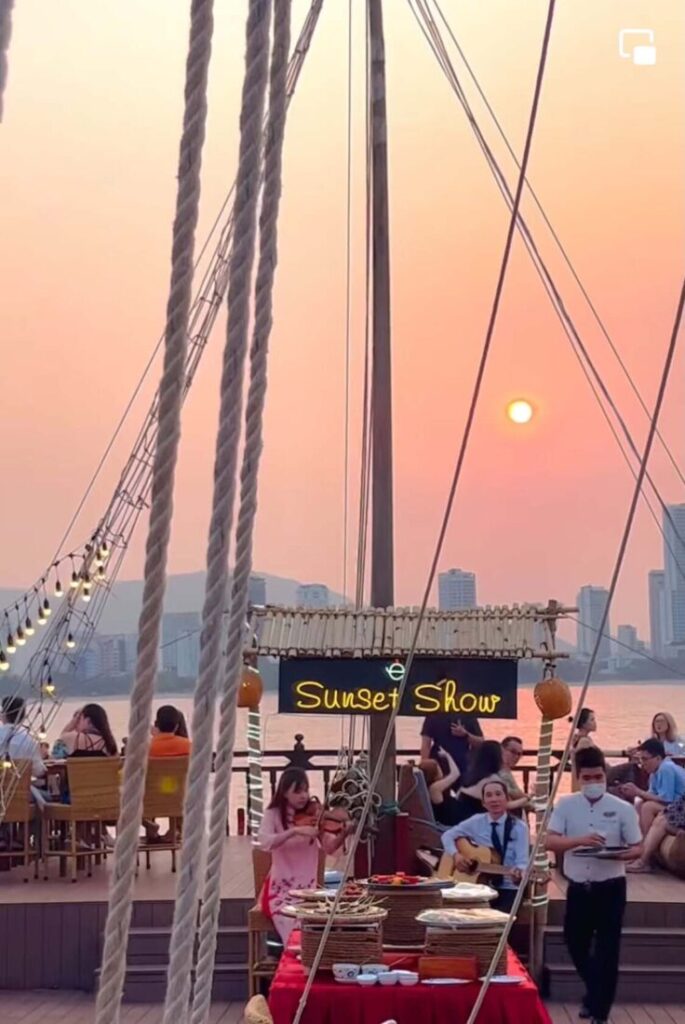
‘As we introduce our boutique brands into the Australian and New Zealand markets, we are looking forward to leveraging the extensive experience, creative approach and exceptional media relationships,’ said Pham Ha.
‘We look forward to welcoming new and returning travellers who are keen to discover our region’s alluring waterways,’ Cao Quang Hung, Vice Director of Lux Cruises Group said. “The post pandemic travelers want to explore, dream, discover, indulge, experience, relax and immerse themselves in natural and culture heritage.
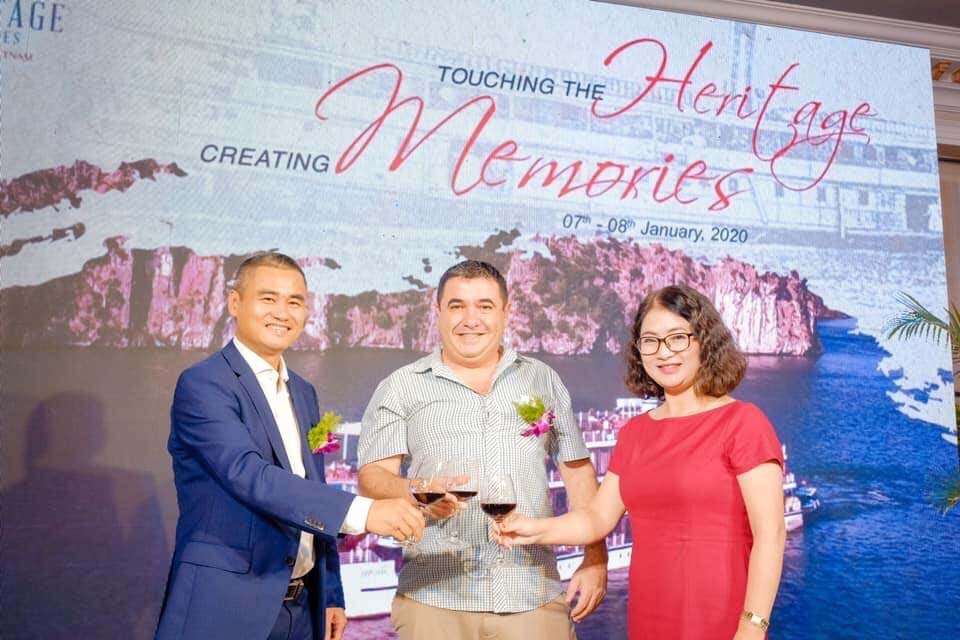
Cruise trending
‘With Vietnam and cruising in Lan Ha Bay, bai Tu Long and Nha Trang Bay in particular trending with Australian and New Zealand travellers during 2023, the timing is ideal to showcase Lux Cruises Group as one of the most luxurious cruises line in Vietnam,’ Cao Quang Hung said.
‘We love to share Vietnam’s stunning waterways, intriguing cultures, fascinating history, delicious cuisine and spectacular scenery with Australian and New Zealand travellers,’ Hung said
Call investors
Making a 67.3 per cent share of the country’s total tourism revenue, a top favourite ocean destination among 156 beach nations, cruise tourism in Vietnam has not been promoted properly so far.
The number of cruise tourists accounts for only 2-3% of the total number of international visitors to Vietnam. Lux Cruises Group’s Founder and CEO Pham Ha emphasized that it is necessary to attract investors to invest in cruise ships and yachts with Vietnamese nationality that run along the coast in this road show in these two countries.

